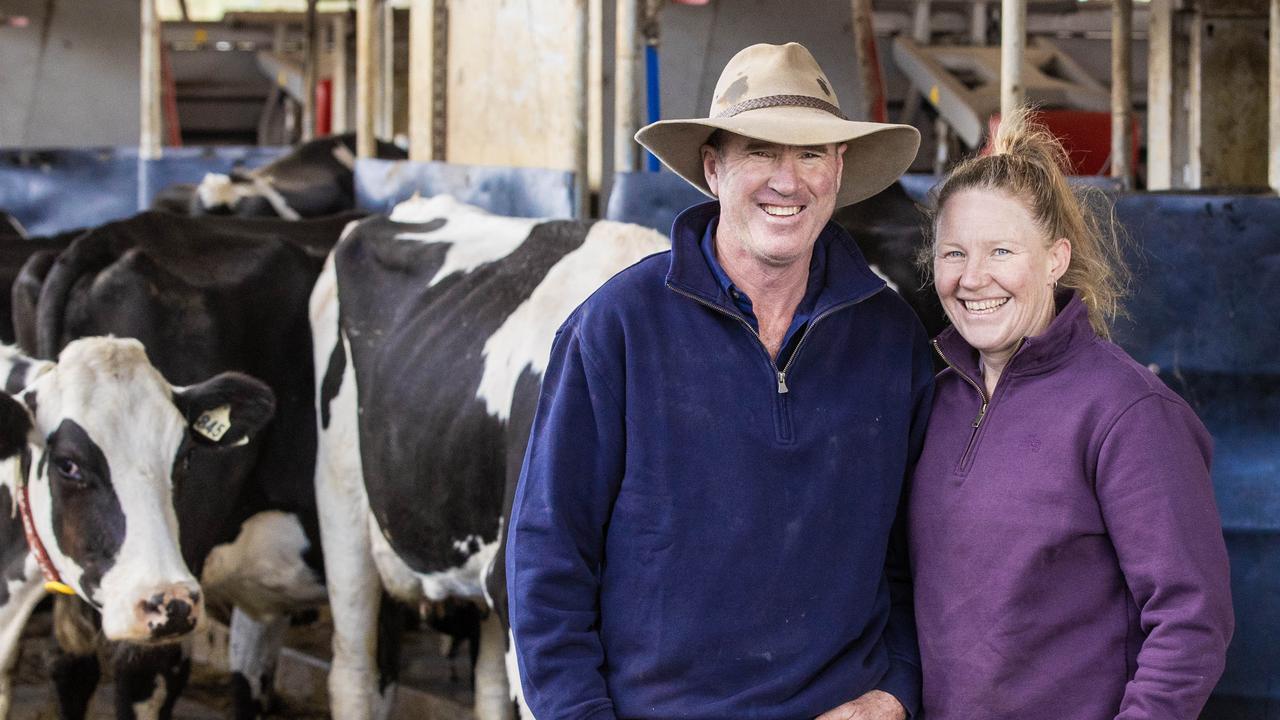Sammy McIntyre: Nuffield scholar and sheep producer at Parawa
A move to composites, strict culling and an eye on welfare has paid off for South Australian sheep producer Sammy McIntyre.
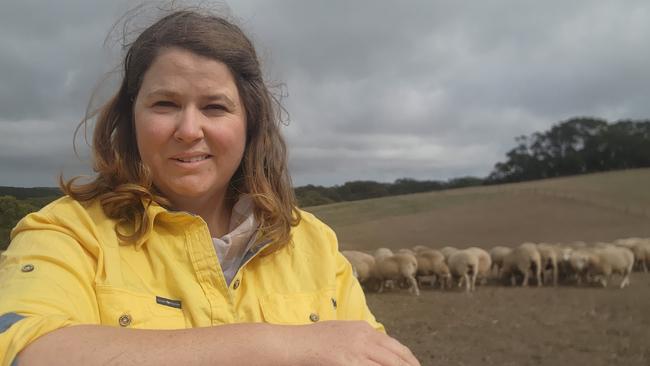
Sheep producer Sammy McIntyre has been focusing on ewe fertility and lamb survival by overhauling her production systems in recent years.
And the figures back it up, with an average of 135 per cent lambs weaned per adult ewe joined.
Sammy runs a self-replacing flock of 1150 breeding ewes and lambs on her family’s 202ha property, Hillstream, at Parawa on South Australia’s Fleurieu Peninsula.
Until they sold the property recently, Sammy’s family ran a cropping and sheep finishing/feedlot on the Yorke Peninsula and purchased the Parawa property when Sammy came back to the farm and wanted to run more sheep.
Sammy has recently changed to a self-replacing composite breed model with a portion of ewes joined back to composites and the rest, including the ewe lambs, to White Suffolk or Poll Dorset lambs for prime lamb production. This model changed from buying in first-cross ewes and joining to terminal sires.
“I purchased some pure composites as lambs in 2021, and while I still have some older first-cross ewes, the flock is predominantly composites now and the flock is relatively young,” Sammy said.
She said composites were the right sheep for her environment.
They have a high annual average rainfall of 850-900mm, although it has been very variable in recent years.
“In 2017 we purchased the property and we have had 650-1150mm a year in that time.”
“I got frustrated with the time and effort I put in culling poor performing sheep from the flock. By the time the first-cross ewes got to five or six years old and they were a high productivity animal they start to lose their teeth and you have to start again,” she said.
Sammy said biosecurity risk from buying in first-cross ewes as replacements also had a part to play in the change.
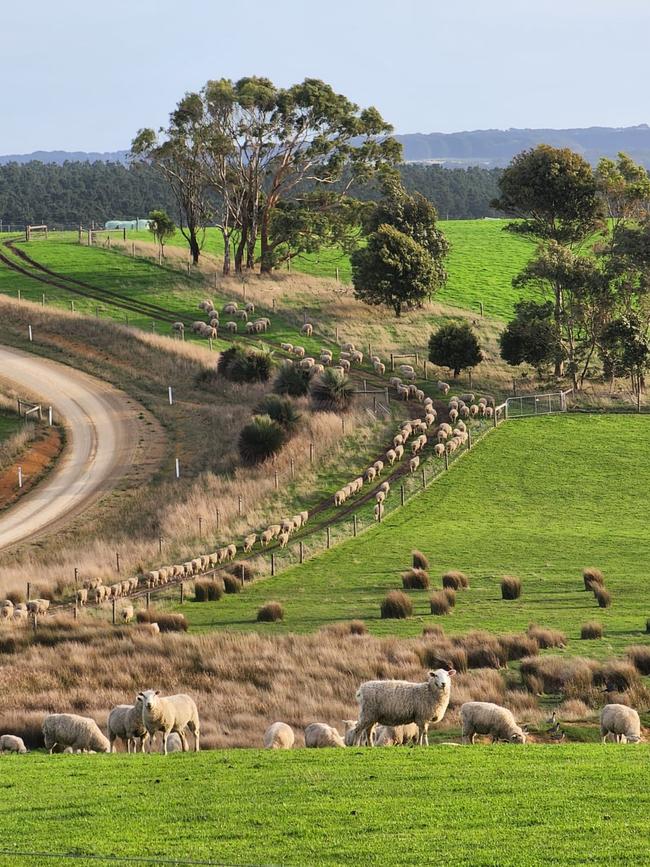
JOINING THE DOTS
Sammy isn’t afraid to experiment with management and production systems to improve results.
And that includes “playing around a bit” with joining.
The main joining is in February for a July lambing and this year the ewes were joined for just 21 days.
“I have gone with a really short single cycle join and only a relatively small portion weren’t in lamb,” Sammy said.
She said it means the older ewes get one shot to get in lamb and after a three week break the hoggets have a second-chance two weeks with the rams, in line with the ewe lamb joining starting in mid-March for four weeks.
“The later joining for ewe lambs gives them an extra six weeks to get to joining weight and reach puberty.”
“I felt like I was joining for three months, so I have tightened it up to make management easier.”
Pregnancy scanning is undertaken in early April and any older sheep not in lamb are sold at saleyards.
Sammy said results from scanning the adult ewes this year after a three week joining are 166 per cent in lamb, while in past years ewe lambs averaged 88 per cent pregnant at 142 per cent (average from two years of joining ewe lambs; 2024 will the be third year).
“Pretty happy with that, it is in line with results in the past.”
On average the weaning rate to ewes joined is 133-135 per cent adult ewes and 92 per cent for ewe lambs.
All ewes are condition scored before joining and if a ewe can’t hold her condition is taken into consideration for culling in the future.
After scanning, the ewes are split into mobs of singles and multiples. They are then condition scored again with the lighter condition multiples run separately and fed accordingly.
SIRE STRENGTH
Sammy generally buys in new ram genetics every year and for terminal sires looks for high early growth, lambing ease and birth weight, while on the maternal side looks for early growth and ewe rearing ability.
“Early growth is important.”
“We have a high rainfall but we still have a Mediterranean environment, so need to get the lambs as far as possible while feed quality is still there.”
The number of lambs sold each year is changing with the switch to self-replacing and sale of her parents cropping property.
However, generally 1100 to 1200 lambs are sold depending on replacements required that year.
Sammy said a mid-weight draft is often sold post-weaning, aged three- to four-months-old for finishing on stubbles or to feedlots and they usually average 33-40kg live.
The tops and bottoms are taken on and finished through to six- to 10-months at heavy weights, with most sold direct to processors.
“With the sale of the cropping property and on-farm feedlot, going forward this will be different with more sold as stores – a part of the reason that early growth has been a focus of my ram selection.”
Sammy started calculating kilograms of lamb produced per hectare a few years ago in order to better track production and profitability.
“You can’t sell your scanning or marking percentages,” she said.
“Cost of production is something I’m working on currently – with the changes in the system going forward, I want to find the sweet spot for optimising farm profitability.”
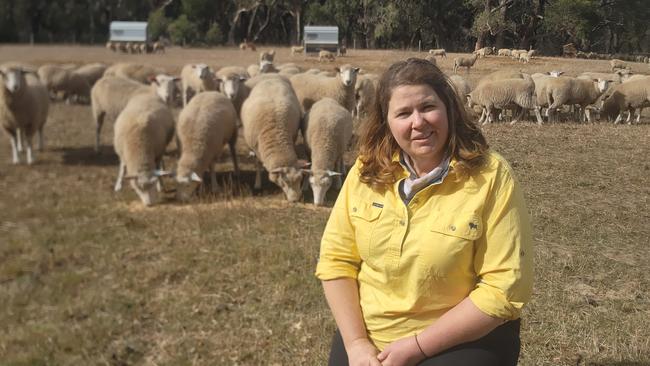
HI-TECH HELP
Pastures are made up of predominantly perennial rye grass and sub clovers, with white clover, chicory and cocksfoot.
Sammy said she has a stand of chicory for ewe lambs to graze and plans to sow more to have more summer active feed.
Supplementary hay or silage is fed, depending on the year.
Annual rye grass is cut for silage, which helps to clean up grasses rather than spraying it out.
Sheep are grazed via a rotational grazing system in small mobs and the timing of the movements depends on the time of year.
Sammy said she keeps a sacrifice paddock to let the pasture get up, which was a really valuable tool and allowed her to turn ewes out into a lambing paddock with feed.
Technology plays a significant role in Sammy’s day-to-day management and production decisions.
She invested in a Te Pari Racewell Handler, which can weigh and draft automatically by weight or electronic identification tag and also undertake a variety of other animal husbandry tasks such as drenching and tagging. It has optical sensors which allow various ‘catch positions’ for the sheep depending on the task to be carried out.
“It makes jobs easier as I am generally doing things by myself, and with this the wear and tear on my body isn’t there. I’m not fighting sheep to pick heads up out of a drenching race.”
Sammy has also been using EID tags since 2022 for all sheep.
“It allows me to record so much. I keep records of scanning, whether the ewe raises a lamb or not and other traits, like if they get flystrike. So I can keep dag scores, condition scores and I come back and figure out who will be joined to terminal ram, be kept as a replacement or on the truck to market.”
“For example, recently I had a lot of ewe lambs in the system and it was difficult to pick out a trait on which to cull older ewes. So I sat down and looked at for every year joined the ewes that had given a single lamb every year, so I ended up culling them.”
“Electronic ID gives the ability to look longer term and I can look at production in terms of the whole flock and each individual animal.”
Other technology includes an auto dosing gun for drenching.
“It is very useful in terms of saving drench but also ensuring they get the right dose, especially when it comes to lambs.”
“I used to guess how much they weighed and I would have underdosed a lot of lambs and if you are consistently underdosing it can breed drench resistance.”
Regular worm egg counts are carried out during spring and summer and drench is used as required, however generally the older ewes don’t need drenching, which is a cost saving and minimises resistance risk.
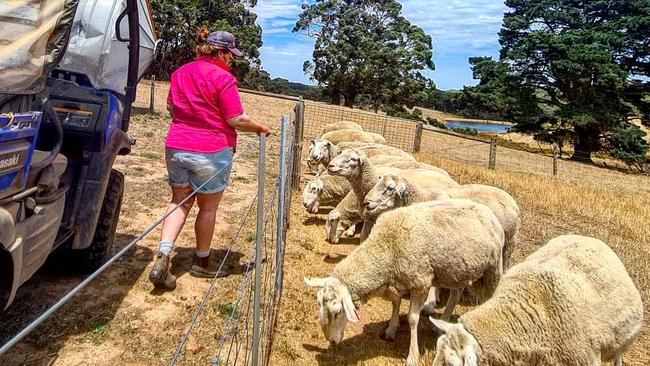
WELFARE A WINNER
Meanwhile, Sammy was awarded a 2023 Nuffield Scholarship to study how enriching feedlot or intensive farming environments could encourage natural behaviours that can enhance lamb production.
“A philosophy I try and farm by is: happy and healthy equals productive. Whether that is animal welfare or treatment decisions it is something that has always been important to me,” Sammy said.
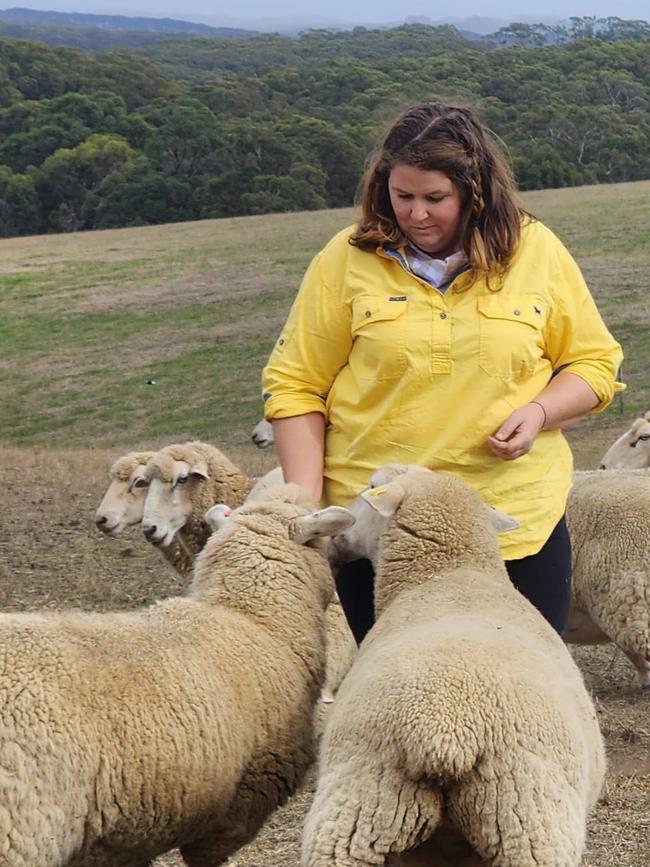
“A couple of years ago I was watching orphan lambs (which Sammy had been feeding) play in a nursery pen. I put a small straw bale in there and they thought it was the best invention ever.
“It got me wondering what behavioural need has driven that and what the importance of lambs playing is.”
“Producers are good at understanding nutrition, water and shelter in those feedlot or intensive environments, but animals are kept in relatively dull environments that can impinge on their freedom to express normal behaviours. Increasingly consumers are seeking out higher welfare products and the consumer aspect on feedlots needs to be addressed.”
Sammy said small studies that have been completed show lambs with enrichment provided, (simply including ramps, platforms or straw bales for lambs play) had significantly higher welfare outcomes, better eating quality and average daily weight gain than those in bare pens.
While Sammy doesn’t operate a feedlot on her property, she does yard wean which is a short burst of intensive farming.
“Yard weaning means I get much calmer and more resilient lambs.”
To test the theory of what she is studying, Sammy made a wooden platform which the lambs can move around the pen and it entertained them.
She said in the northern hemisphere in housed livestock systems, lambs were given straw for bedding which was to help with cold and to keep them dry, but it also provides enrichment as they spread it around themselves and play in it.
While Sammy still had study to undertake, she said finding something for enrichment that was realistic and practical is the hard part.





